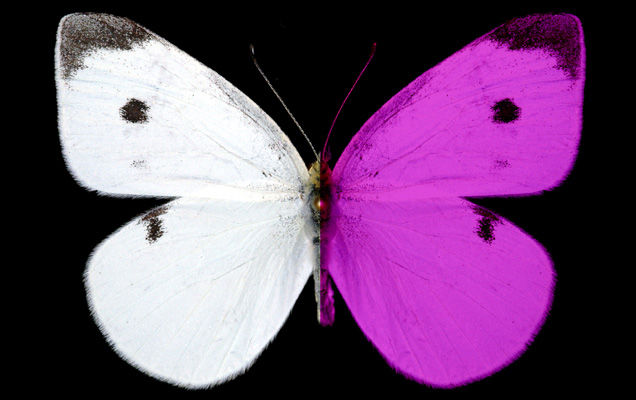Did you know that butterflies use ultraviolet colors to communicate with each other?
Cabbage white butterflies look white to us but their wing structures reflect ultraviolet light in a range of colors they can see.
In the image above, the left side of the cabbage white looks normal to us, but the right side is closer to reality. We’re missing a lot of beauty because we can’t see ultraviolet wavelengths.
Female cabbage whites have structures on the ventral side (underside) of their wings that reflect particular ultraviolet colors that attract the males to initiate mating.
With her wings folded, a female cabbage white signals “come hither.” If she doesn’t like him she opens her wings to display the less reflective dorsal (back) side, effectively shutting off the attraction signal.
The males are reflective too, in a way that’s attractive to the ladies.
There’s a downside, though. Birds that eat butterflies can see ultraviolet light so those signals can attract more than just a mate.
(Image by Nathan Morehouse linked from the Science Magazine article. Click on the image to see the original.)

Didn’t they recently discover that, in at least some birds, the mouth is highlighted in UV to help mother know where to aim the food?
Parakeets have UV highlights on their forehead–sunscreen on the forehead makes the males less attractive.
Now if only I could figure out how our African greys can tell if food is hot or cold by looking at it… Maybe they’ve just learned that the microwave beeps mean hot food is coming.
Very interesting, Kate! Thanks for sharing that.
Flowers, too, have ultraviolet lines that act like highways, to guide insects into their corollas so that the flower can be pollinated.